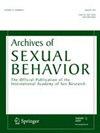Despite its potentially fatal consequences, sexual choking/strangulation is an increasingly common sexual practice. Existing research suggests that its growing prevalence is partly a consequence of its popular construction as “risky yet safe.” Few studies have directly examined how people frame and engage in choking/strangulation in terms of “safety”—what people think it means for strangulation to be (or not be) “safe” and how people think safety during strangulation can be achieved. Drawing on qualitative text responses from a survey collected in 2023, this paper examined whether and how Australian adults aged between 18–35 perceived choking/strangulation in terms of “safety.” We identified and discussed four main themes arising from the data: choking/strangulation during sex can be safe; pressure/intensity is a safety mechanism; consent is a safety mechanism; and trust and communication are necessary. In consideration of these themes, we suggest that many Australian young people are not aware of the risks of choking/strangulation during sex and frequently equate pressure/intensity and consent, within a trusting relationship, with safety. Given the significant risks and harms associated with any sexual choking/strangulation and the resultant difficulty in achieving safe use, we concluded that appropriate education and information should be provided to young people.


